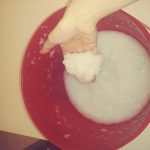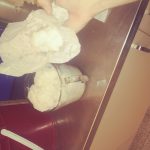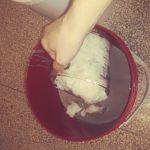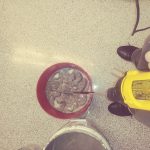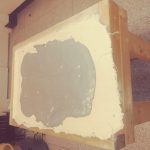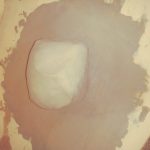 I’ve started an album in my Google Photos and plan to fill it with inspirational imagery. I wanted to upload everything here, but there isn’t enough room on the blog. So, I will link different albums as I go along of the photos and images I gather. Here are some great images of rope art I found on Pinterest to keep you interested.
I’ve started an album in my Google Photos and plan to fill it with inspirational imagery. I wanted to upload everything here, but there isn’t enough room on the blog. So, I will link different albums as I go along of the photos and images I gather. Here are some great images of rope art I found on Pinterest to keep you interested.
 These would be really cool as ceramic pieces. I had a difficult time last year getting the slip to soak into thicker pieces of cord, so we will see what I can manage.
These would be really cool as ceramic pieces. I had a difficult time last year getting the slip to soak into thicker pieces of cord, so we will see what I can manage.
Author Archives: jennifer johnson
Making Paper Clay
From past experience with trying to incorporate slip-soaked yarn with other clay slabs, I discovered that they drive differently, which leads to cracking. So, I tried making my slabs from paper clay.
The texture of clay combined with soggy toilet paper pulp is very light and fluffy. It is easier to manipulate because the cellulose fibres give it more strength and flexibility. It also dries more slowly because the fibres hold on to moisture, so it is less prone to cracking. It is fun to work with, but it is less useful for functional pieces because it is more porous and may leak. For sculptural pieces it is great.
Here I am making paper clay. I could just let it dry after mixing the toilet paper and slip, but you can see in the following gallery I get tired of waiting and wedge it into a different clay body.
Growth Mindset
“Becoming is better than being.” –Carol Dweck
I love learning and trying new things, but I am usually extremely stressed out when it comes time to submit a product. Sometimes, the stress starts in even before I start making anything. I always want it to be amazing. (Remember what I was saying about enabling constraints? sigh) As it turns out, this is because I tend towards a fixed mindset.
“Believing that your qualities are carved in stone—the fixed mindset—creates an urgency to prove yourself over and over.” – Carol Dweck
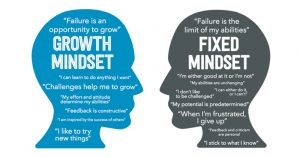
Dweck defines a growth mindset as a person believing “that their most basic abilities can be developed through dedication and hard work—brains and talent are just the starting point. This view creates a love of learning and a resilience that is essential for great accomplishment.”
One of my goals this year is to grow my growth mindset.
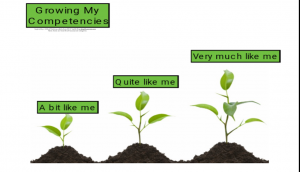
I think this will help me become a better teacher because I will begin to model reactions and use strategies in response to challenges that my students can imitate. There is no point in telling students to have a growth mindset if I am stressed out and overwhelmed by challenges myself.
“Picture your brain forming new connections as you meet the challenge and learn. Keep on going.” – Carol Dweck
“So what should we say when children complete a task—say, math problems—quickly and perfectly? Should we deny them the praise they have earned? Yes. When this happens, I say, “Whoops. I guess that was too easy. I apologize for wasting your time. Let’s do something you can really learn from!” – Carol Dweck
“Important achievements require a clear focus, all-out effort, and a bottomless trunk full of strategies. Plus allies in learning.” – Carol Dweck
“Just because some people can do something with little or no training, it doesn’t mean that others can’t do it (and sometimes do it even better) with training.” – Carol Dweck
“What did you learn today? What mistake did you make that taught you something? What did you try hard at today?” – Carol Dweck
Three I’s
1st question: What do I want to do? I think the whole point of doing this in a ceramic studio boils down to I want to play with clay. So let’s start with that.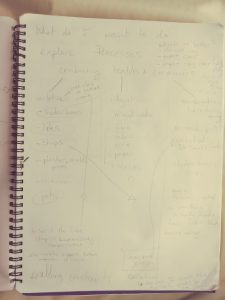 I did some scribbles in my sketchbook, but they don’t translate well. Next time, I will have to switch to pen for my ideation.
I did some scribbles in my sketchbook, but they don’t translate well. Next time, I will have to switch to pen for my ideation.
So the three areas of focus will be
- Imitation, or when ceramics imitate products that might be made from textiles. This could include woven ceramic tiles, zippers and buttons made with press molds, pots that look like fabric because of their texture or surface decoration.
- Incorporation, as in when the actual fibre or fabric is added to clay and fired. I want to experiment with macrame or push the work I did with doilies last year. I might make a whole Dr. Seuss styled garden. **I think there is more tension in a work that is dependent on the original structure of fibres that burn away. There is something surreal about it.
- Integration, consisting of artworks that include both textile and ceramic elements in the final product. These would be mixed media works made of fibre, fabric, wire, paper and clay.
An A/R/Tographical approach to Ceramic and Fibre Inquiry
I know my inquiry will be much more focused if I can direct it with an essential question. However, I still feel like I am working through the parameters, so I will probably narrow it down as I go. Here is the question I will start off with:
“How can combining textiles and ceramics with an A/R/Tographical approach generate ideas, innovations and products that merit two semesters of exploration?”
That’s pretty broad. One of my teachers this summer spoke about enabling constraints. I should set some. An A/R/Tographical approach will require me to function as an Artist, a Researcher and a Teacher.
Artist: Creative Inquiry
- Processes concept-driven
- Form considering principles and elements of design
- Tradition
- History
Researcher
- Find relevant resources like articles, books, blogs, and tutorials
- Are there any articles about the purposes of fibre And/or ceramic art or maybe about the tension created by combining them?
- Observe artists and their work
Teacher
- I want to develop independence in a studio setting
- I want to consider safety
- I want to question, research and reflect upon values that would be shared in arts education environments
I am not sure if those are good enough constraints, but it is helping me organize.
